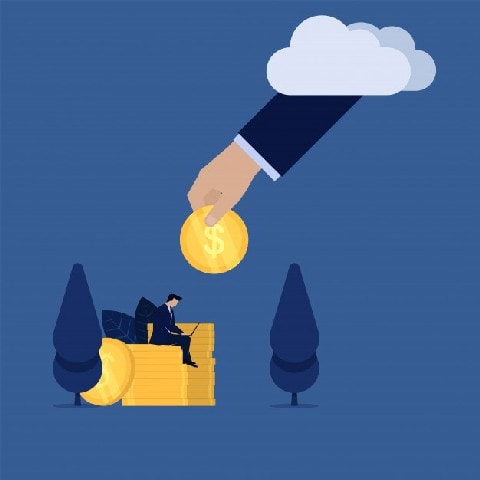Definition: Internal environment is the set of conditions, factors, or components within an organization that affects how it functions and carries out its operations, and can also be affected by the organization’s activities and decisions.
Some examples of internal environment key factors are resources, organizational structure, culture, and management style.
- Resources refer to the physical assets that enable an organization to carry out its operations such as money, facilities, and equipment.
- Organizational structure is the way that an organization arranges its hierarchy of authority and responsibility within the entire organization.
- Culture is the shared values, beliefs, attitudes, and behaviors that employees share in their workplace.
- Management style is the approach of how managers interact with subordinates, teams, and other stakeholders.
Table of Contents
What is the Internal Environment?
The internal environment refers to conditions, components, and factors that exist within an organization’s boundaries and influence its activities and decision-making. It is based on resources such as money, facilities, and equipment, as well as the organizational structure, culture, and management style.
These factors influence how effectively an organization can achieve its goals and objectives. Like in the human body, the internal factors can be regulated and managed, allowing for a greater level of control than the external environment, by understanding the internal environment, organizations can make decisions and take actions that will lead to better performance.
The internal environment of an organization is formed of various elements such as the management of the organization, employees of the organization, philosophy of the organization, and the goals & objectives of the organization. It is a component of the Business environment and consists of various factors present inside the organization. The internal environment not only influences the activities and choices of employees but also affects the behavior of employees within the organization. These factors influence the behavior of people working in the organization and also impact their ability to make decisions.
For example, in a traditional organization, the relationship between managers and employees is stringent. The manager will only give commands to his subordinates and expect them to do their job as asked, whereas, in a modern organization, the relationship between a manager and his assistants is somewhat lenient. The manager does not only assign work to his employees but also provides them with opportunities to stay their opinion and to grow in their careers.
Key Components or Factors Influencing Internal Environment
1. Organizational structure
Organizational structure means the way information follows in an organization. An organizational structure of an organization defines the composition of the board of directors, management, and shareholders. The structure of an organization influences the decision-making capacity of an organization. The more level of management in the organization means more delays in decision making.
For example, if an organization has three levels of management, then it will take more time to provide a solution to the problem faced by laborers as compared to an organization with a lesser number of management levels. The ability to make quick decisions is essential for an organization.
The role of the board of directors is vital in all critical decision making. Practical managerial skills are required to run an organization smoothly and to achieve the goals of the organization. In addition to this, the board of directors plays an essential role in designing policies for an organization.
Further, these policies influence the decisions taken regarding the growth and functioning of the organization. The professionalism and decision-making ability of management is very crucial for the success of an organization.
2. Human resources environment
Human resources are the employees and labor working in an organization. Human resource is the most crucial asset to an organization. The success of an organization depends on the human resource of an organization.
The way employees are treated, and their skills are harnessed tells a lot about an organization. In present times, talented employees like to work in organizations where they are given opportunities to grow.
3. Value System
The value system of an organization is also known as the philosophy of an organization. The value system of an organization contains work processes, culture, norms, climate, and work processes of an organization.
The value system of an organization defines the way it works or treats its employees and customers. In addition to this, the value system of an organization also determines how the employees of the organization should perform their duties. They should do their work by remaining within the value system.
4. Physical Resources
Physical resources mean the machinery, tools, and all other tangible assets of an organization. The physical resources are significant for the success of an organization. A company with better and more modern physical resources has a competitive edge over its competitors.
For example, an organization with an automation machine can produce more in a given period as compared to an organization with machinery which requires manual handling. Because of this reason, companies always look for better mechanisms and updates it frequently to produce more and generate more profits.
5. Mission and Objectives
The mission and objectives of an organization play an essential role in deciding the future position of the organization and its place in the market. The business plan is developed and resources are used to achieve the objectives of the organization’s internal environment.
6. Corporate culture
The corporate culture of an organization is also known as organizational culture. The corporate culture of an organization defines the beliefs, values, and assumptions followed by the management and employees of an organization. It contributes in identifying the unique social and psychological ethos of an organization.
The organizational culture of an organization influences everything from the way employees interact with one another to the way important decisions are made in the organization. Organizational culture controls the way information is shared in the organization.
7. Financial and marketing resources
How can an organization’s internal environment contribute to its success?
Several recent industry insights suggest that an effective internal environment can significantly enhance an organization’s competitive position. According to a 2023 report by Deloitte, companies that invest in enhancing corporate culture, improving management styles, and better utilizing human resources were found to be 21% more likely to outperform their competitors financially. The report emphasizes that understanding the internal factors can aid companies in navigating through market volatility and achieving long-term growth. This underlines the critical role that the internal environment plays in ensuring organizational resilience and success.
Inspirational quotes from marketing leaders also shed light on the importance of internal dynamics. As Simon Sinek, a well-known leadership expert, states, “Corporate culture doesn’t come from a spreadsheet; it comes from people.” This highlights the importance of nurturing a positive internal environment, where employees feel valued and empowered, in driving the success of an organization. Sinek’s insights encourage businesses to focus on building a strong and supportive culture as a foundation for achieving their strategic objectives.
Financial resources define the income or total capital of an organization. An organization with financial stability can decide to expand their business or can explore new markets. Whereas organizations with limited financial resources find it challenging to grow their business.
8. Plans and Policies
Plans and policies of an organization are developed to achieve the goals of the organization and to create discipline in the organization.
9. Corporate image
Corporate image means the reputation of an organization in the market. A company with a positive corporate image attracts the right talent in the organization.
10. Labour management
Labour management means how an organization handles its employees and laborers. The way employees are handled in an organization affects based on its internal environment of an organization.
11. Technical capabilities
Technical capabilities imply to the technology used in the organization. Like physical resources, companies with the latest technology have a competitive edge over their competitors. The importance of technology has increased especially in the present era of technology.
Difference between Internal and External Environment
The internal environment includes all the factors within an organization that affects its performance and functioning. This includes factors like organizational culture, financial resources, plans and policies, corporate image, labor management, and technical capabilities. On the other hand, the external environment includes all the factors outside of an organization that affects its performance and functioning. This can include factors like economic conditions, competitive environment, technological advancements, political scenarios, and market regulations.
If you compare it with our human bodies, the internal environment of a human body is the bloodstream and the external environment is the atmosphere in which we live. So, blood, glucose, protein, etc are the internal environment while the external environment includes air, temperature, and other factors that influence our metabolic rate.
Similarly, an organization’s internal environment can be affected by the organization’s culture, processes, and financial resources. It also includes a negative feedback loop that helps the company adjust its strategies according to changing market conditions. On the other hand, the external environment affects a company’s performance by affecting technological capabilities and competitive market situations.
Liked this post? Check out the complete series on Marketing




Thanks very much
It really helpful